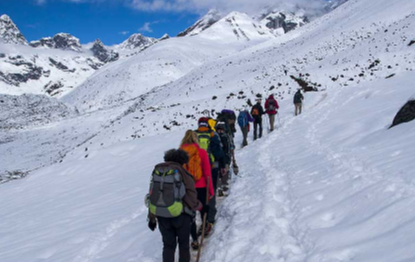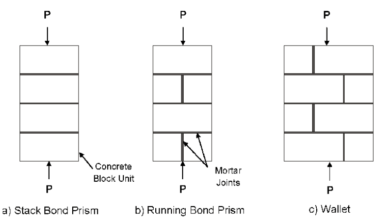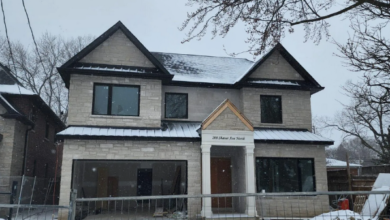Everest Base Camp Trek In February

Embarking on the Everest Base Camp trek is a dream for many adventure enthusiasts. The journey to the base camp of the world’s highest peak offers breathtaking views, challenging terrain, and a sense of accomplishment like no other. While the trek is demanding, it is also incredibly rewarding. In this blog post, we will delve into the details of the Everest Base Camp trek, focusing on the experience in February.
Cost:
The cost of the Everest Base Camp trek can vary depending on several factors such as the duration of the trek, the services included, and the trekking company chosen. On average, the cost of the trek can range from $1,500 to $3,000 per person. This cost typically covers permits, accommodation, meals, guide and porter services, and transportation during the trek.
Details Itinerary Of Everest Base Camp Trek:
The Everest Base Camp trek usually takes around 12-14 days to complete, depending on the itinerary chosen. A typical itinerary for the trek includes stops at various villages and acclimatization days to help trekkers adjust to the high altitude. Here is a sample itinerary for the Everest Base Camp trek in February:
Day 1: Arrival in Kathmandu
Day 2: Fly to Lukla, trek to Phakding
Day 3: Trek to Namche Bazaar
Day 4: Acclimatization day in Namche Bazaar
Day 5: Trek to Tengboche
Day 6: Trek to Dingboche
Day 7: Acclimatization day in Dingboche
Day 8: Trek to Lobuche
Day 9: Trek to Gorak Shep, visit Everest Base Camp
Day 10: Hike to Kala Patthar, trek back to Pheriche
Day 11: Trek back to Namche Bazaar
Day 12: Trek back to Lukla
Day 13: Fly back to Kathmandu
Guide and Porter:
Having a knowledgeable guide and a reliable porter can greatly enhance your Everest Base Camp trekking experience. Guides are essential for navigation, providing information about the local culture and geography, and ensuring your safety throughout the trek. Porters help carry your gear, allowing you to focus on enjoying the journey. When booking your trek, make sure to choose a reputable company like Sherpa Expedition and Trekking that provides experienced guides and porters.
Accommodation:
During the Everest Base Camp trek, trekkers stay in tea houses or lodges along the trail. These accommodations are basic but comfortable, offering a warm bed, hot meals, and stunning views of the surrounding mountains. In February, the tea houses may be less crowded, providing a more peaceful and authentic experience.
Transportation:
The Everest Base Camp trek typically begins with a flight from Kathmandu to Lukla, where the trek officially starts. The flight to Lukla is an adventure in itself, offering stunning views of the Himalayas. Once in Lukla, trekkers will trek on foot to reach the base camp, passing through picturesque villages and breathtaking landscapes along the way.
Best Time To Trek To Everest Base Camp:
February is considered one of the best times to trek to Everest Base Camp. The weather is cold but stable, with clear skies and fewer trekkers on the trail compared to the peak season. The views of the snow-capped mountains are spectacular in February, creating a magical winter wonderland atmosphere.
Packing for the Everest Base Camp trek requires careful planning to ensure you have all the essentials for a successful and safe journey. Here is a comprehensive packing list for your Everest Base Camp trek:
Clothing:
– Moisture-wicking base layers (tops and bottoms)
– Insulating layers (fleece jacket, down jacket)
– Waterproof and windproof outer shell jacket and pants
– Trekking pants and shorts
– Long-sleeve shirts
– T-shirts
– Warm hat and gloves
– Sun hat and sunglasses
– Hiking socks
– Undergarments
– Gaiters (optional but useful for keeping snow out of your boots)
Footwear:
– Sturdy hiking boots with ankle support
– Camp shoes or sandals for relaxing in the evenings
Gear:
– Backpack (40-50 liters)
– Sleeping bag (rated for cold temperatures)
– Sleeping pad
– Trekking poles
– Headlamp or flashlight with extra batteries
– Water bottles or hydration system
– Snacks for the trail
– Personal first aid kit
– Sunscreen and lip balm with SPF
– Insect repellent
– Personal toiletries (toothbrush, toothpaste, biodegradable soap, etc.)
– Quick-dry towel
– Multi-tool or knife
– Duct tape (for gear repairs)
– Camera or smartphone for capturing memories
Miscellaneous:
– Passport and necessary permits
– Cash (local currency and USD for emergencies)
– Travel insurance documents
– Trekking map and guidebook
– Notebook and pen
– Portable charger or power bank
– Lightweight daypack for side trips or exploring
– Trash bags for packing out waste
Remember to pack light but efficiently, as you will be carrying your own gear throughout the trek. Layering your clothing will help you adapt to changing weather conditions, and having the right gear will ensure a comfortable and enjoyable trek to Everest Base Camp.
Weather Conditions:
In February, the weather in the Everest region is cold and dry. Daytime temperatures can range from -5°C to 10°C, while nighttime temperatures can drop below freezing. Trekkers should be prepared for cold weather conditions, with proper clothing and gear to stay warm and comfortable throughout the trek.
Best Trekking Company for Everest Base Camp Trek:
Sherpa Expedition and Trekking is renowned as one of the best trekking companies for the Everest Base Camp trek. With experienced guides, reliable porters, and a strong focus on safety and customer satisfaction, Sherpa Expedition and Trekking ensures a memorable and rewarding trekking experience for all their clients.
Physical Fitness for Everest Base Camp Trek:
The Everest Base Camp trek is a challenging adventure that requires a good level of physical fitness. Trekkers should be prepared for long days of walking on steep and uneven terrain, as well as high altitude conditions. Prior training, including cardiovascular exercises, strength training, and hiking, can help improve your fitness level and endurance for the trek.
Read more Unveiling the Cons of Tankless Water Heaters
Temperature:
Temperatures during the Everest Base Camp trek in February can vary depending on the elevation. In the lower regions, temperatures may be milder during the day, while higher altitudes can be much colder. It is essential to pack warm clothing, including insulated jackets, thermal layers, gloves, and hats, to stay comfortable in the cold temperatures.
Inclusions:
When booking your Everest Base Camp trek with a reputable company like Sherpa Expedition and Trekking, the following inclusions are typically provided:
– Permits for the trek
– Accommodation in tea houses or lodges
– Meals during the trek
– Experienced guide and porter services
– Transportation during the trek
– Domestic flights to and from Lukla
– Emergency evacuation services
Conclusion:
Embarking on the Everest Base Camp trek in February is a once-in-a-lifetime adventure that offers stunning views, challenging terrain, and a sense of accomplishment like no other. With proper preparation, including physical fitness training, packing appropriate gear, and choosing a reliable trekking company like Sherpa Expedition and Trekking, you can have a safe and unforgettable trekking experience to the base camp of the world’s highest peak.





